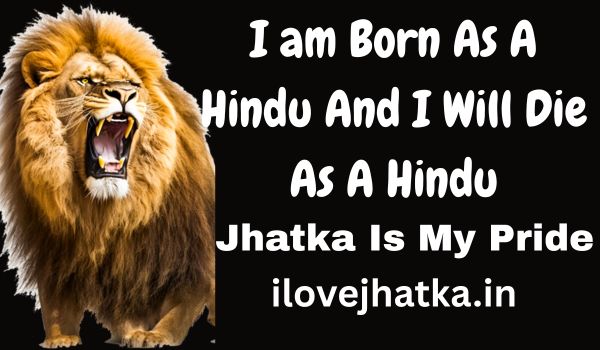Why Jhatka is Considered the Best: A Comprehensive Look
Jhatka, a method of slaughtering animals for meat consumption, is widely regarded in certain communities, particularly among Sikhs and Hindus, as a humane, ethical, and practical approach. Originating from cultural and religious traditions, Jhatka involves the swift and single-stroke severance of an animal’s head to ensure instantaneous death. This article explores why Jhatka is often deemed superior to other methods of slaughter, delving into its ethical, scientific, cultural, and practical merits.
1. Ethical and Humane Considerations
The primary argument in favor of Jhatka is its emphasis on minimizing animal suffering. In Jhatka, the animal is killed with a single, swift cut using a sharp blade, severing the spinal cord and major blood vessels instantly. This results in immediate unconsciousness and death, ensuring the animal experiences minimal pain or distress. In contrast, other methods like Halal (where the animal’s throat is slit and it is left to bleed out) or industrial slaughter techniques (which may involve stunning or prolonged processes) can prolong the animal’s suffering. Scientific studies suggest that the rapid loss of blood pressure to the brain in Jhatka leads to almost instantaneous unconsciousness, making it one of the most humane methods of slaughter when performed correctly. ###
2. Scientific and Hygienic Benefits
From a scientific perspective, Jhatka is believed to produce meat that is cleaner and less stressed. When an animal is killed instantly, it does not have time to release stress hormones like cortisol and adrenaline, which can affect the quality and taste of the meat. These hormones, released during prolonged or stressful slaughter methods, can make the meat tougher and less palatable. Additionally, Jhatka ensures that the blood is drained quickly and efficiently from the body due to the immediate severance of major arteries. This reduces the risk of bacterial growth in the meat, as blood is a breeding ground for microbes. The quick process also minimizes the chances of contamination during slaughter, making Jhatka a hygienic choice.
3. Cultural and Religious Significance
Jhatka holds deep cultural and religious importance, particularly in Sikhism and some Hindu traditions. In Sikhism, Jhatka is the prescribed method of preparing meat for consumption, as it aligns with the community’s values of compassion, efficiency, and respect for life. The practice is rooted in the belief that if meat is to be consumed, the animal should be killed in the quickest and least painful way possible. Historically, Jhatka was also a symbol of resistance against oppression. During the Mughal era, when Halal slaughter was mandated in certain regions, Sikhs and Hindus used Jhatka as an assertion of their cultural identity and autonomy. Today, it remains a point of pride for many communities, symbolizing both ethical treatment of animals and adherence to tradition.
4. Practical Advantages
From a practical standpoint, Jhatka is straightforward and efficient. It requires minimal equipment—just a sharp blade and a skilled practitioner—making it accessible in various settings, from rural farms to religious ceremonies. Unlike some modern slaughter methods that rely on complex machinery or stunning equipment, Jhatka is a low-cost, low-tech process that can be performed with precision by trained individuals. Moreover, Jhatka is versatile and can be applied to various animals, including goats, chickens, and larger livestock, making it adaptable to different dietary needs and cultural practices. The simplicity of the method ensures that it can be performed in a controlled manner, reducing the likelihood of errors that could cause unnecessary suffering.
5.Taste and Culinary Perspective
Many meat enthusiasts argue that Jhatka meat has a superior taste and texture compared to meat prepared through other methods. The absence of stress hormones and the rapid draining of blood contribute to a cleaner, fresher flavor. In culinary traditions, especially in North Indian and Punjabi cuisines, Jhatka meat is prized for its tenderness and quality, making it a preferred choice for dishes like tandoori chicken, mutton curry, and kebabs. ###
6. Environmental and Economic Considerations
Jhatka’s simplicity also makes it an environmentally and economically viable option. Unlike industrial slaughterhouses that consume significant energy and water, Jhatka requires minimal resources. This aligns with sustainable practices, particularly in rural or small-scale farming communities where large-scale slaughter facilities are not feasible. By reducing reliance on energy-intensive machinery, Jhatka supports a more eco-friendly approach to meat production. Economically, Jhatka benefits small-scale farmers and butchers who may not have access to expensive slaughterhouse equipment. The method allows communities to maintain self-sufficiency while adhering to ethical and cultural standards. ###
Addressing Common Criticisms
Critics of Jhatka sometimes argue that the method appears brutal due to its swift and decisive nature. However, this perception often stems from a misunderstanding of the process. When performed by a skilled practitioner, Jhatka is far less cruel than methods that involve prolonged bleeding or stunning, which can fail to render the animal unconscious. Additionally, advancements in training and tools have further refined the Jhatka technique, ensuring precision and minimal suffering. Another criticism is that Jhatka may not be suitable for large-scale industrial meat production. While this is true to some extent, Jhatka’s benefits are most pronounced in smaller, community-based settings where ethical and cultural considerations take precedence over mass production.
Conclusion
Jhatka stands out as a slaughter method that balances ethical, scientific, cultural, and practical considerations. Its emphasis on minimizing animal suffering, producing high-quality meat, and aligning with cultural values makes it a preferred choice for many communities, particularly Sikhs and Hindus. While no slaughter method is entirely free of ethical dilemmas, Jhatka’s focus on speed, hygiene, and compassion positions it as one of the most humane and effective approaches available. By combining tradition with practicality, Jhatka not only preserves cultural heritage but also offers a model for ethical meat consumption in a world increasingly concerned with animal welfare and sustainability. For those who value these principles, Jhatka remains a compelling and superior choice.

